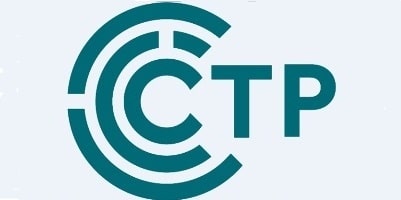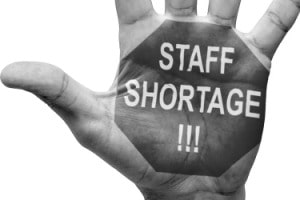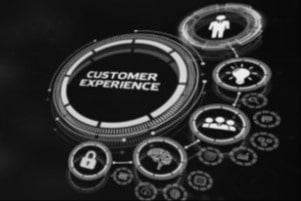Key CX challenges in the travel sector – and how to solve them -Rick Kirkham, Founder and Managing Director, Customer Touch Point
As the travel sector tries to recover lost ground post-Covid, it faces several significant customer experience challenges.
Of all the industries affected by Covid, travel was perhaps the hardest hit. During the first lockdown in the UK, monthly air passenger arrivals to the UK declined by 98.3%, from 6,804,900 in February 2020 to 112,300 in April 2020. In 2021 there was a 71% drop in international flights to and from the UK compared with 2019.
Even by summer 2021, ABTA, the UK trade association for tour operators and travel agents, predicted that “almost 200,000 UK travel jobs” had either been lost or were still at risk.
Now that the travel industry is finally beginning to re-emerge in Britain and across the world, it faces major obstacles. Chief amongst these is customer experience, according to McKinsey. With travel numbers rising and many people keen to resume leisure travel after months of going without, customers are likely to experience delays, lack of service, and unmet expectations.
In a time of rapid change, customer loyalty is up for grabs by those companies who do the best job. According to McKinsey, travel companies that prioritise CX have the potential to “gain loyalty, build resilience, and future-proof their businesses.” Let’s explore this idea in more detail.
Travel CX executives overate their CX performance
One big fact to emerge from McKinsey’s recent travel industry research is that …
If CX executives consistently overrate how good a job they’re doing, they’re setting themselves up for a fall once they get customer feedback. If they are not even aware that their CX performance is lacking, they are unlikely to meet customers’ expectations.
How to solve this challenge:
Ask how you can understand your customers’ needs and expectations more accurately. Conduct some research with customers to get a feel for what they want. Try to anticipate where your CX may be lacking and take action to improve it, or else to be transparent with your customers about the service level they should expect. Managing expectations and frequent, open communication may well be the key here.
Low staffing levels and rising contact costs
Staffing is at near-crisis levels in many parts of the industry. Manchester Airport recently issued a warning for travellers to expect delays to international fights throughout 2022 due to staff shortages:
“The tight labour market around the airport has meant we have just not been able to hire people quickly enough to establish a full-strength team.”
This challenge is also being felt in contact centres, with travel and hospitality company contact centres experiencing “extensive hold times and call abandon rates greater than 40%.”
 How to solve this challenge:
How to solve this challenge:
Consider extending flexible working arrangements. During the pandemic, almost half of contact centre staff indicated that they preferred to work from home. Contact centres may need to take on more people on flexible or part-time contracts to provide full availability for customers.
At the same time, implementing a CX automation system could help reduce call volumes and keep contact costs under control. Giving customers information they need at the right time prevents unnecessary calls coming into the contact centre. Call priority routing picks up on the emotion and urgency in the voice of a caller, triggering which calls agents take and which queries the technology takes.
 Disjointed customer experience
Disjointed customer experience
With the rise in remote and hybrid working, digital and telephony channels are not always joined up well. Often, the solution is a workaround that was developed in the early days of lockdown as a temporary fix that was never replaced.
When your digital channels don’t ‘talk’ to your live agent channels, it creates frustration and inefficiency and increases your cost of contact, since this leads to more inbound calls coming into your contact centre. It can also increase the average call times, as frustrated customers’ queries usually take longer to resolve, tying up your agents for longer. The alternative is that it can damage brand loyalty and your reputation, as customers either don’t bother trying to call, or else they get stuck in a call queue first and then give up altogether.
 How to solve this challenge:
How to solve this challenge:
If you can improve your omni-channel experience with a properly joined-up system, your contact centre agents will be able to view customer interaction data and history in real time.
They can then handle the call more efficiently as the customer doesn’t have to repeat anything.
 Gaining customer trust and loyalty
Gaining customer trust and loyalty
As McKinsey puts it: “As travel volumes increase and business travelers return, there is potential for a wave of customer dissatisfaction—at a time when loyalty is up for grabs.” Businesses that aren’t offering effortless, seamless and speedy contact solutions are likely to lose out to the competition.
If anything, most people’s experience of lockdown has been to increase their reliance on digital services, from Amazon to supermarket home deliveries to ordering takeaways. These digital experiences are now the standard of convenience and intuitive customer journey design that most customers expect, and travel firms will need to play catch up.
 How to solve this challenge:
How to solve this challenge:
Focus on customer engagement first and foremost. Contact centres exist for the sole purpose of making it easier for customers to solve their challenges, resolve their complaints, or answer their queries, and we lose sight of this at our peril.
“Travel firms must tailor digital customer journey design to their customers’ needs and channel preferences. Using customer satisfaction scores as a measure of success in this regard is flawed.
“Instead, it’s best to measure customer effort. Low effort equals a good experience, whereas a good C-sat score can hide poor customer sentiment.”
When looking at measuring customer feedback, firms should analyse how easy or difficult the interaction was. This allows for corrective action and future changes to the customer journey that will improve the experience.
 Don’t forget the human touch
Don’t forget the human touch
Technology holds the key to good customer experience, but technology alone is not enough. Travel companies need to think strategically about how they use technology to improve the customer journey. At the same time, we must remember that many consumers prefer human interaction and that means talking to someone when they need to, to solve their queries. Many are now travelling for the first time in over 2 years and need reassurance about new processes, rules and other details. This can be difficult to find online, especially for those who are less confident with digital channels.
The issues at airports such as Manchester may be exacerbated by staff shortages. Fundamentally, however, airports – and travel companies – seem to lack the vision or desire to deliver a positive experience for customers at what is a key touch point for them. Although holiday companies have no direct control over the airport experience, being aware of issues and working to mitigate them would have a huge positive impact on CX.
Setting up special customer lounges at airports, offering something free for the flight, or sending live real-time updates on flight delays are some examples of where the human touch makes a difference. Customers will more likely reward those companies that act as if they care about them with more loyalty. The sector as a whole should consider how it can do more to influence and improve the customer experience at key points along the journey.
Many travel companies are still reeling from the financial impact of Covid. As a result, investing in CX technology and processes now might seem like too much of an extra burden when they are still financially vulnerable. However, McKinsey research on the 2007-2009 downturn showed that those companies that prioritised their CX during that downturn outperformed their competition for years afterwards.
The same is likely to be true now for travel companies. Wise investment in CX that prioritises customer needs and the reduction of customer effort will be the competitive advantage that will help far-sighted travel firms to flourish in the years ahead.

If you’re in the travel sector and want to explore how we can help with a CX strategy or exploring new technology, get in touch.
Customer Touch Point specialises in long-term and instant impact customer experience solutions for organisations worldwide, providing the tools and support they need to deliver effortless customer experiences.

For additional information on view their Company Profile


 How to solve this challenge:
How to solve this challenge: Disjointed customer experience
Disjointed customer experience Gaining customer trust and loyalty
Gaining customer trust and loyalty Don’t forget the human touch
Don’t forget the human touch


